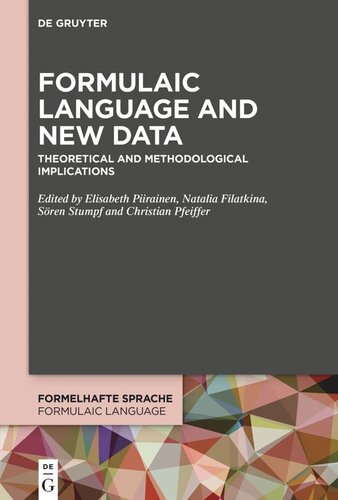

Most ebook files are in PDF format, so you can easily read them using various software such as Foxit Reader or directly on the Google Chrome browser.
Some ebook files are released by publishers in other formats such as .awz, .mobi, .epub, .fb2, etc. You may need to install specific software to read these formats on mobile/PC, such as Calibre.
Please read the tutorial at this link: https://ebookbell.com/faq
We offer FREE conversion to the popular formats you request; however, this may take some time. Therefore, right after payment, please email us, and we will try to provide the service as quickly as possible.
For some exceptional file formats or broken links (if any), please refrain from opening any disputes. Instead, email us first, and we will try to assist within a maximum of 6 hours.
EbookBell Team

4.4
102 reviewsThe existence of formulaic patterns has been attested to all languages of the world. However, systematic research in this field has been focused on only a few European standard languages with a rich literary tradition and a high degree of written norm. It was on the basis of these data that the theoretical framework and methodological approaches were developed.
The volume shifts this focus by centering the investigation on new data, including data from lesser-used languages and dialects, extra-european languages, linguistic varieties mostly used in spoken domains as well as at previous historical stages of language development. Their inclusion challenges the existing postulates at both a theoretical and methodological level.
Areas of interest include the following questions: What is formulaic in these types of languages, varieties and dialects? Are the criteria developed within the framework of phraseological research applicable to new data? Can any specific types of formulaic patterns and/or any specific features of regular (already known) types of formulaic patterns be observed and how do they emerge? What methodological difficulties need to be overcome when dealing with new data?